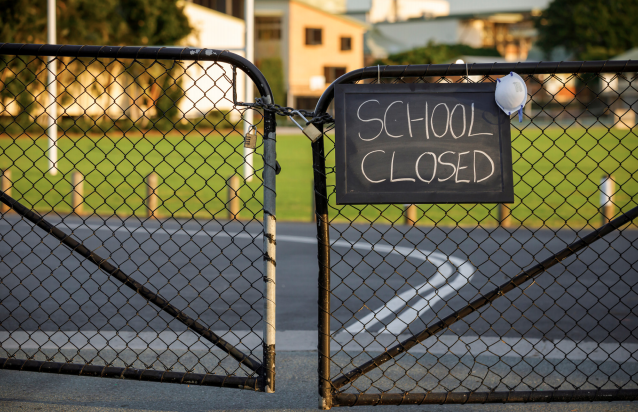Less in-person instruction linked to greater learning loss
Minnesota students in school districts that switched to distance learning over the course of the 2020-21 school year had greater declines in math compared to their peers in school districts that stayed mostly in-person, according to a study by the National Bureau of Economic Research.
Students in distance learning fell further behind than their in-person peers

The study analyzed pre-COVID state test data and spring 2021 data combined with comprehensive data on district schooling modes across 12 states: Colorado, Connecticut, Florida, Massachusetts, Minnesota, Nevada, Ohio, Rhode Island, Virginia, West Virginia, Wisconsin and Wyoming.
Overall, learning loss was evident across all 12 states given the pandemic, but was significantly larger in districts that offered less access to in-person learning.
[M]oving a district from 0% to 100% access to in-person learning would mitigate test score loss by 10.1 percentage points in math and 3.7 percentage points in ELA. Both are highly significant.
| Total declines on average for 2020 school year | Math | Reading |
| 14.2 percentage points | 6.3 percentage points | |
| Declines in districts that remained in-person for 2020 school year | Math | Reading |
| 4.1 percentage points | 3.1 percentage points |
When broken down by race and ethnicity, being in the classroom greatly benefited black and Hispanic students’ reading scores. However, districts with a greater share of students of color were associated with less access to in-person learning.
Minnesota and Virginia students spent the least amount of the school year in-person compared to the other 10 states.
Minnesota math scores followed trend, reading did not
In districts that offered more in-person learning, students lost less ground compared to their peers in hybrid and distance learning. Interestingly, while reading test scores dropped overall compared to pre-COVID scores, they were slightly better among students with less in-person instruction (less than one-third of the school year) compared to those with more time in the classroom (between one-third and two-thirds of the year). It is not known if parental involvement at home, such as more time reading together, contributed to the difference.
Outliers
The study’s authors acknowledge that other factors such as tutoring, changes in childcare, and parents’ working conditions could have impacted test scores, but emphasize that low-scoring students were less likely to participate in testing during COVID, which “would suggest our estimates understate test score losses.” Also worth noting, the study found that in-person learning shares were higher in areas with higher COVID-19 rates.
Conclusion
School closures will have long-term detrimental educational and economic consequences. Our students cannot afford to lose more ground. And the value of in-person learning couldn’t be more clear. Given this, and that we now know schools were not large drivers of COVID-19 cases, state leaders and policymakers should do all they can to keep students in classrooms and direct federal and state relief aid toward learning recovery efforts.